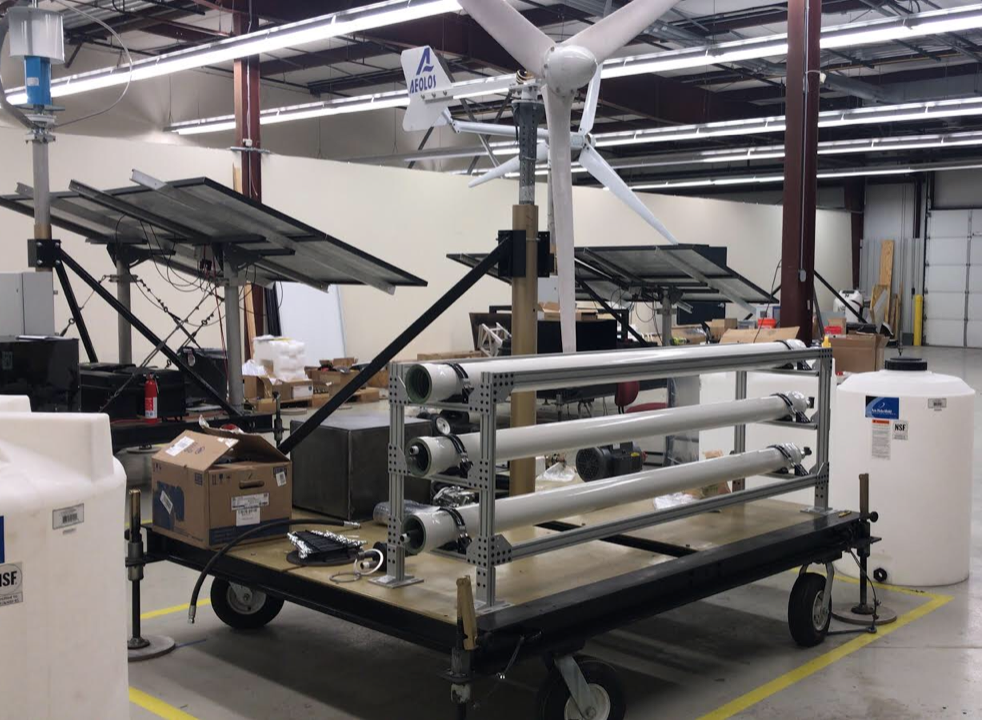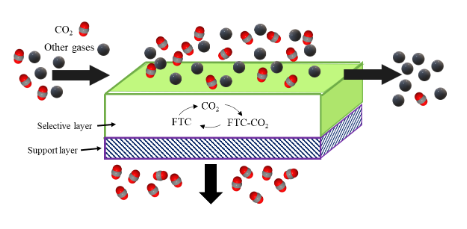Research Projects
Research projects focus on water treatment, using thermofluids and nanoengineering.

Water-Renewable Energy Microgrids
We are adapting water desalination technologies to work with remote water-energy Microgrids with wind, wave, and solar power, designing them for the intermittent limitations of renewable power. Innovations include multiple means of energy storage, and novel hydraulic integration of reverse osmosis with wind or wave power. We also examine blue energy pressure retarded osmosis, and salinity gradient energy storage.

Batch Reverse Osmosis
David has developed new configurations to enable batch reverse osmosis, which uses time-varying pressure to vastly improve energy efficiency. This technology aims to be the most energy efficient membrane desalination process every demonstrated, and modeling work showing this expected performance has been published in the journal Water Research. David was a competitor on the American Water Association's Tech Idol competition for this work. There has been licensing interest for patents on this from at least 3 companies, which are being actively pursued.

Superhydrophobic Nanoengineered Surfaces
Nanoengineered surfaces can enhance the performance of thermal desalination technologies such as membrane distillation. Here, the aim is to improve mass transfer coefficients while simultaneously trying not to enhance heat transfer as much, thus improving the process at a systems-level. This nano-design, combined with a systems level modelling, can enable substantially enhanced air-gap membrane distillation

Thermodynamic Design of Membrane Distillation
How can membrane distillation (MD) systems be made more efficient? This includes work on the effect of tilt angle on air gap MD performance, system optimization, new modeling techniques for MD, superhydrophobic condensing for MD, and design of multistage MD systems. The analysis for these systems includes thermodynamic and heat transfer modeling with Engineering Equation Solver, designing and building experimental systems for testing heat transfer enhancements and the efficiency of new configurations.

Other Desalination Technologies
With a growing global water crisis as humanity’s water use exceeds renewable rainwater, desalination and water treatment technologies will play a major role in feeding growing demand, sparing rivers and aquifers. Research on other desalination technologies includes analysis of entropy generation when using waste heat, efficiency comparison with other technologies, and efficiency enhancements on mainstream technologies. This work has included multistage flash (MSF), multi-effect distillation (MED), humidification-dehumidification desalination (HDH), mechanical vapor compression (MVC), reverse osmosis (RO), and counter-current reverse osmosis (CCRO).

Energy Efficiency in Buildings
Buildings use 75% of electricity in the U.S., making building energy efficiency among the most critical low-hanging fruit for reducing carbon emissions cheaply. Ongoing energy modeling research includes energy modeling for enhanced dehumidification processes and building control systems including variable air volume. Previously, David worked at the building consulting firm ARUP were he performed energy modeling, heating and cooling system design, and sustainability analysis for office complexes, art museums, university laboratories, hotels, performing arts centers, restaurants, spas, and embassies, including 6 LEED platinum projects. Additionally, his undergraduate work has included coordinating the team for the high-tech, sustainable, international “Solar Decathlon” competition.

Water Vapor-Selective Membrane Energy Exchangers
We are developing innovative methods for high-efficiency air conditioning, using water vapor-selective membranes for dehumidification. With new process designs and novel material enhancements, such a technology can provide significant energy savings for buildings. Since HVAC operations account for nearly 20% of the primary energy consumed in the US, developing more efficient cooling systems is a major target for combating global warming and resource depletion

Photonic nanomaterial photocatalytic membranes
Many pollutants hazardous to human health, including pesticides, fluoropolymers, and pathogens, can be broken down into their constituent minerals through photocatalysis. However, existing membranes need substantially improved UV light utilization and penetration for real world use. We are working on consistently-sized nanostructures near the wavelengths of UV light to control light and enhance the performance of novel photocatalytic membranes.

Atmospheric Water Harvesting
The Earth’s atmosphere transport far more water than all the world’s rivers, but has barely been tapped as a resource. We perform thermodynamic modeling, experiments, and materials fabrications on Atmospheric Water Harvesting (AWH). We work to unify understanding between processes, develop new processes, and develop new materials that can passively harvest water vapor from the air.

Membrane technology for CO2 removal in space
One of the most significant technological barriers to putting humans on mars is reliable carbon dioxide removal in air revitalization for life support systems. High levels of CO 2 within a spacecraft causes migraines and dangerously impairs cognitive function. The current technologies being investigated for CO2 removal heavily rely on expandable media such as filters, adsorbents, and ion-exchange resins. These sorbent materials are thermally regenerable (therefore energy intensive) and often face challenges in degradation, contamination, and frequent replacement. There is great opportunity to leverage transformative advances in membrane technology resulting from research efforts to reduce CO2 emissions in gas processing and apply them to air revitalization. High performance facilitated transport polymer membranes with a significantly enhanced affinity for CO 2 have shown to be effective for the selective removal of CO 2 in combustion by-products. Applied to air revitalization in space, membrane technology could provide a lower energy replacement for current heat-driven technologies. It also has the potential to reduce mass, power, and volume, and improve reliability and efficiency in comparison to current systems.

COVID+Pollutant Remediation in HVAC
Modern pandemics, and the ~3 million deaths per year from poor air quality, have made clear that we need to implement technologies to make indoor air safer. However, technologies to remediate bioaersols (that can contain viruses) like photocatalysis have failed to impact the problem, due to poorly understood complex physics and chemistry. We are working to implement protocols for verifying the effectiveness of photocatalytic and UV technologies to make air safe, and developing generalized physics to guide what processes can be successful in enhancing air safety.

Other Projects
Other Heat Transfer Projects
Other heat transfer projects have included modeling heat transfer for fish ponds, dinosaurs, household geothermal systems using existing water infrastructure, and solar thermal systems.
Non-Heat Transfer Projects
Other projects have included oxycombustion chemical modeling, finite element analysis for gas turbine blades, proposed wetland construction for pollution mitigation, and spaceship modeling.
